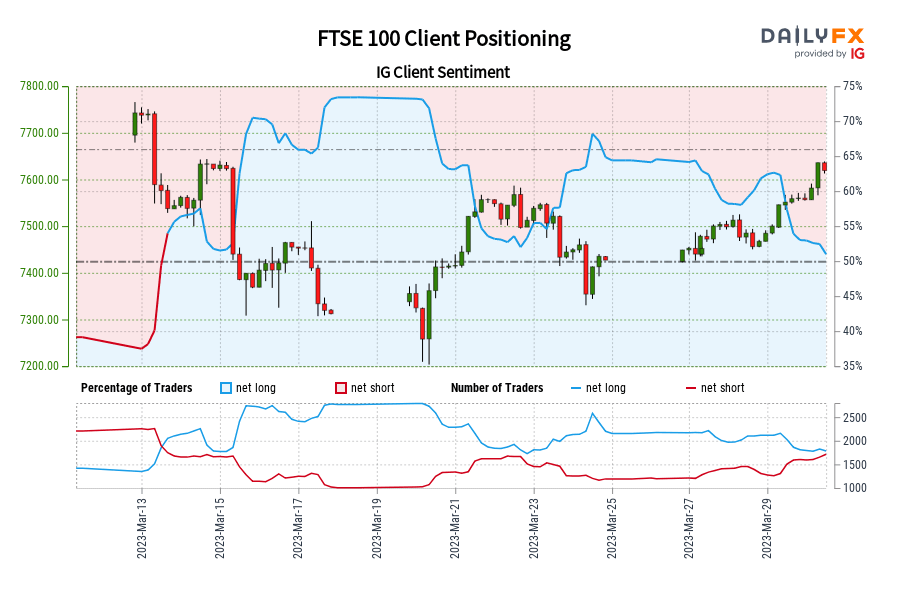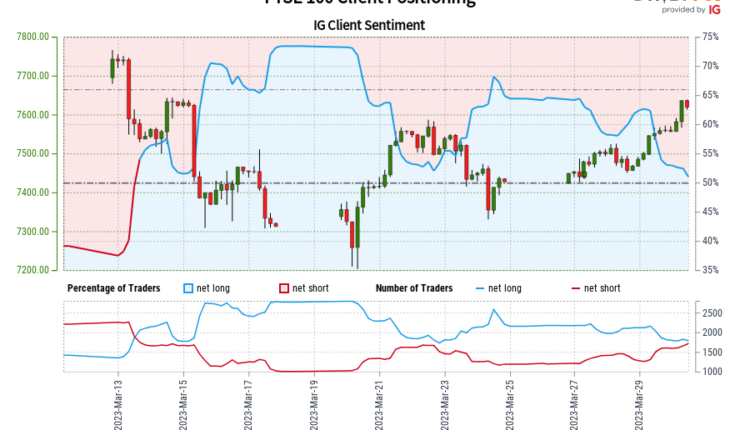Our data shows traders are now net-short FTSE 100 for the first time since Mar 13, 2023 when FTSE 100 traded near 7,543.90.

Number of traders net-short has increased by 20.23% from last week.
| SYMBOL | TRADING BIAS | NET-LONG% | NET-SHORT% | CHANGE IN LONGS | CHANGE IN SHORTS | CHANGE IN OI |
|---|---|---|---|---|---|---|
| FTSE 100 | BULLISH | 49.41% | 50.59% |
-13.36% Daily -16.40% Weekly |
15.27% Daily 20.23% Weekly |
-0.91% Daily -1.17% Weekly |
| Change in | Longs | Shorts | OI |
| Daily | -12% | 12% | -1% |
| Weekly | -18% | 19% | -2% |
FTSE 100: Retail trader data shows 49.41% of traders are net-long with the ratio of traders short to long at 1.02 to 1. In fact, traders have remained net-short since Mar 13 when FTSE 100 traded near 7,543.90, price has moved 1.01% higher since then. The number of traders net-long is 13.36% lower than yesterday and 16.40% lower from last week, while the number of traders net-short is 15.27% higher than yesterday and 20.23% higher from last week.
We typically take a contrarian view to crowd sentiment, and the fact traders are net-short suggests FTSE 100 prices may continue to rise.
Our data shows traders are now net-short FTSE 100 for the first time since Mar 13, 2023 when FTSE 100 traded near 7,543.90. Traders are further net-short than yesterday and last week, and the combination of current sentiment and recent changes gives us a stronger FTSE 100-bullish contrarian trading bias.


Comments are closed.